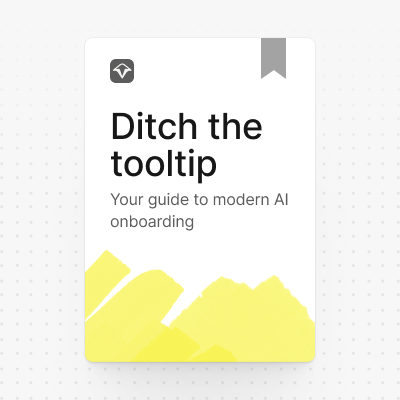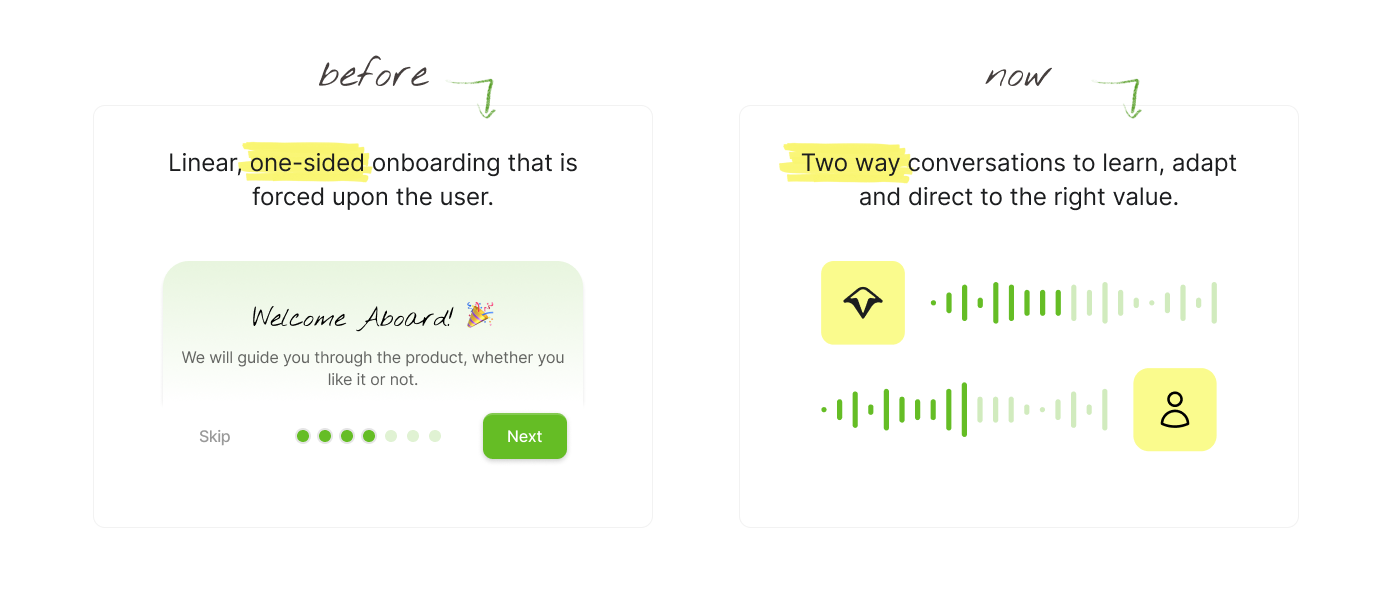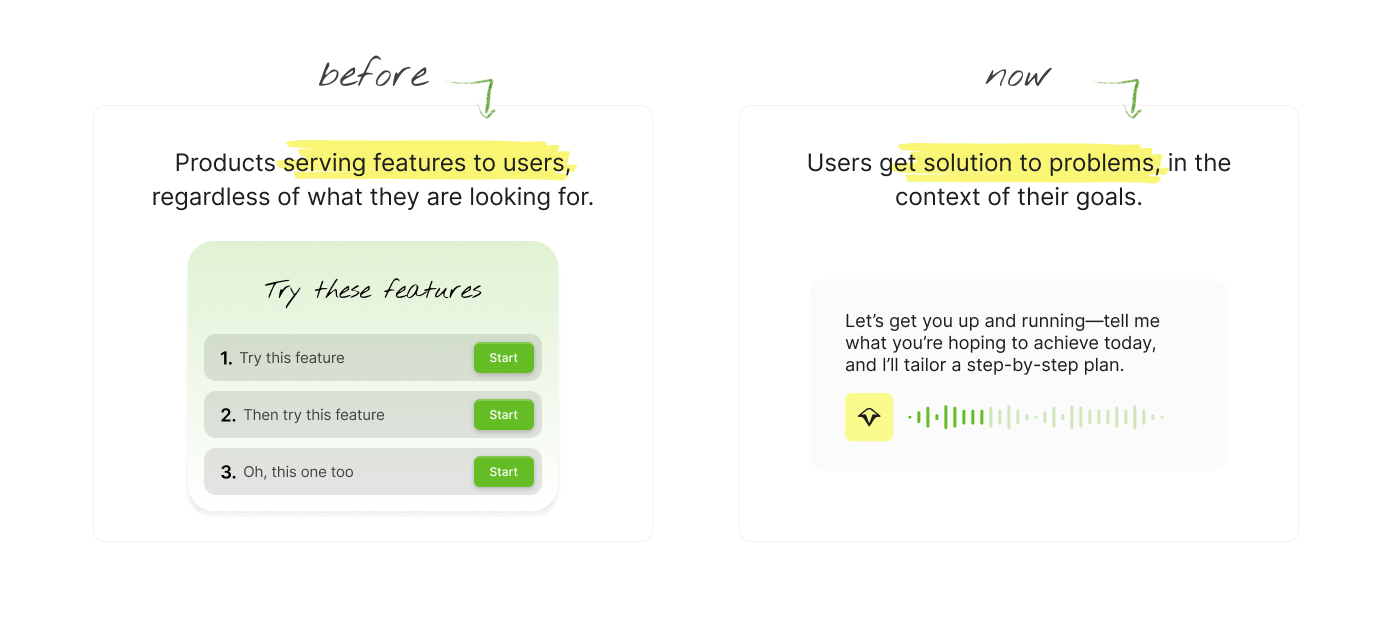

Onboarding hasn't fundamentally changed since the early 2000s, mostly because software itself hasn't had leaps in innovation until AI became prolific amongst all the tools we're using on a daily basis. That's why we're at a very exciting turning point for onboarding—where we're able to redefine people's very first impression of software.
At Quarterzip, we believe it's time for onboarding to keep pace with how fast software is evolving, in a way that matches the intelligence, adaptability, and contextual understanding that users now expect.
Onboarding is Now a Two-Way Conversation

What came with the accessibility of AI is more than just huge automation unlocks—it's also the new technologies and building blocks that software now has access to.
Voice AI means people can now speak naturally to software, which allows us to automate and scale up what makes customer success successful: having an experience where you can talk, discuss, and collaborate in natural language. This creates a two-way conversation instead of a product pushing notifications and tooltips at you.
Cross-Product Context

Users work across multiple tools, but guidance was trapped in silos without context from each other. In a world where more and more tools are linked together—either to automate between tools or to gain context—screen-sharing technology combined with AI means that onboarding can now span entire workflows.
AI can understand how your work moves between Slack, Notion, Figma, and other tools, providing guidance that bridges these connections rather than treating each application in isolation.
Feature to Solution Matching

The success of AI in replicating the human experience relies on how well it's trained for your specific purposes, context, goals, and knowledge.
This represents a fundamental paradigm shift: instead of products serving features to users, users can ask for solutions to their problems and AI finds the matching features—replicating the success of what good CSMs do for enterprise customers.
Old way: "Click here to create a project, then click here to add team members..."
New way: User says "I need to rally my team around our Q4 goals" → AI identifies relevant features across tools and guides a personalized workflow
We can now scale up what has historically made the best sales and customer success roles successful by serving up features that match exactly to each user's specific use case.
Building Blocks of AI-Native Onboarding
This new era of onboarding is powered by several AI capabilities working together:
- AI agents trained on comprehensive product knowledge that understand not just features, but use cases and user intentions
- Real-time screen analysis that provides contextual understanding of what users are actually doing
- Voice recognition and natural language processing that interprets goals rather than just commands
- Cross-platform integration capabilities that understand how tools work together in real workflows
- Personalization engines that learn from user behavior and adapt guidance over time
The benefit to users is obvious—they get to extract value from products as soon as possible, without the cognitive overhead of learning interfaces or translating their goals into feature-specific actions.
The Path Forward
We're at the beginning of this transformation. The companies that recognize this shift and build AI-native onboarding experiences won't just improve their conversion rates—they'll redefine what it means to discover and adopt software.
The question isn't whether this future will arrive, but how quickly your onboarding will evolve to meet it. If you are interested in shaping the future of AI-native onboarding, then book a call with us at Quarterzip.
We replace your post sales teams


